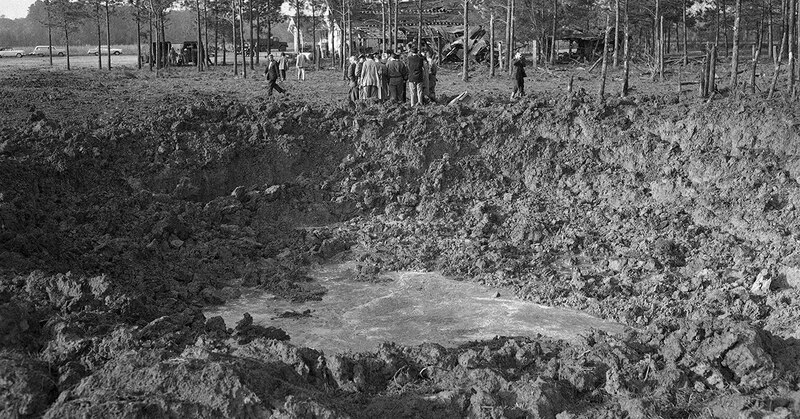SIGforum.com  Main Page
Main Page  The Lounge
The Lounge  March 11, 1958 – B-47 accidently drops nuclear bomb on house in Mars Bluff, SC
March 11, 1958 – B-47 accidently drops nuclear bomb on house in Mars Bluff, SC
 Main Page
Main Page  The Lounge
The Lounge  March 11, 1958 – B-47 accidently drops nuclear bomb on house in Mars Bluff, SC
March 11, 1958 – B-47 accidently drops nuclear bomb on house in Mars Bluff, SCGo  | New  | Find  | Notify  | Tools  | Reply  |  |
Serenity now! |
File this under things you probably never knew (at least, I didn't know about it) Link 
Ladies and gentlemen, take my advice - pull down your pants and slide on the ice. ʘ ͜ʖ ʘ | ||
|
Member |
There were a number of incidents back in the '50s and '60s. _________________________________________________________________________ “A man’s treatment of a dog is no indication of the man’s nature, but his treatment of a cat is. It is the crucial test. None but the humane treat a cat well.” -- Mark Twain, 1902 | |||
|
Member |
[snip] In May of 1957 a thermonuclear bomb fell out of an airplane and landed on Mesa del Sol, one mile southeast of the Albuquerque Airport. The hydrogen bomb, a Mark 17 model, was one of the largest and most powerful weapons ever made by the United States. It weighed 42,000 pounds and had a design yield of 15 to 20 megatons of TNT, 1,000 times more powerful than the atomic bombs used in World War II. The bomb fell through the closed bomb bay doors of the plane, which was approaching Kirtland at an altitude of 1,700 feet. It was destroyed on impact. Though a chain reaction was impossible, as the plutonium pits were stored separately on the plane, the accident spread radioactive fuel material and parts over a wide area. The Air Force cleaned up the site in secret,[snip] https://clui.org/ludb/site/mark-17-bomb-accident-site . | |||
|
| Member |
Isn’t there at least one nuke that was lost in an accident and never found? Somewhere near the mouth of the Mississippi River, if I remember right. Side note: the B-47 is a beautiful aircraft! | |||
|
| Member |
There is a lost bomb in Georgia due to a mid air collision. Tybee Island Let all Men know thee, but no man know thee thoroughly: Men freely ford that see the shallows. Benjamin Franklin | |||
|
| Powered by Social Strata |
| Please Wait. Your request is being processed... |
|
SIGforum.com  Main Page
Main Page  The Lounge
The Lounge  March 11, 1958 – B-47 accidently drops nuclear bomb on house in Mars Bluff, SC
March 11, 1958 – B-47 accidently drops nuclear bomb on house in Mars Bluff, SC
 Main Page
Main Page  The Lounge
The Lounge  March 11, 1958 – B-47 accidently drops nuclear bomb on house in Mars Bluff, SC
March 11, 1958 – B-47 accidently drops nuclear bomb on house in Mars Bluff, SC© SIGforum 2025